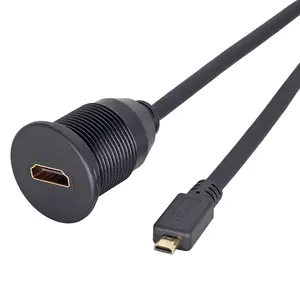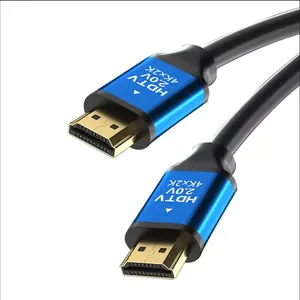

Flush Mount HDTV Socket For Car Truck Boat RV Dashboard Audio Video Micro HD MI Male To HDM Female Cable


High Quality Gold Plated Cable Support HDMI 2.1 8K Cable 4K120Hz 3D Ultra High Speed Flexible Cable For Hdtv PS5 Xbox
























Mini HDMI to HDMI cables serve as a crucial link between various electronic devices, enabling high-definition audio and video transmission. These cables are specifically designed to connect portable devices to larger displays, such as linking cameras or tablets to TVs or monitors.
The construction of mini HDMI to HDMI cables is robust, featuring materials like nylon fiber and PVC jackets. These materials ensure the cables are durable and can withstand different usage scenarios. Tinned copper mesh shielding is often employed to provide additional protection and maintain signal integrity.
Ensuring a stable connection, these cables are crafted to prevent signal loss and are compatible with a wide range of devices. The use of advanced technology in these cables supports instantaneous transmission, safeguarding against external interferences that could disrupt the signal.
Available in various lengths and colors, mini HDMI to HDMI cables cater to diverse needs and preferences. These cables are not just functional but also offer aesthetic appeal to suit different devices and setups. The flexibility in design does not compromise the functionality, providing users with both style and performance.
Adherence to environmental and safety standards is paramount, and these cables often come with ISO, CE, and ROHS certifications. Such credentials indicate that the cables meet international standards for safety and environmental impact, ensuring that users are purchasing responsibly made products.
With triple shielding, mini HDMI to HDMI cables are fortified against electromagnetic interference (EMI) and radio-frequency interference (RFI), which are common concerns in densely electronic environments. This feature is particularly important for maintaining the quality of audio and video signals in professional settings.